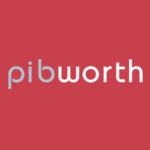 Making a good referral involves much more than simply identifying someone who you think would be a good client for a colleague and putting them in touch. Your gesture is sincere but the lack of real effort you expend in making sure the fit is a good one and that both can benefit from the introduction can back fire and make you more of a nuisance than a nurturer. The adage that “It’s better to have referred and lost than never referred at all” simply doesn’t work when it comes to protecting your professional reputation and personal brand.
Making a good referral involves much more than simply identifying someone who you think would be a good client for a colleague and putting them in touch. Your gesture is sincere but the lack of real effort you expend in making sure the fit is a good one and that both can benefit from the introduction can back fire and make you more of a nuisance than a nurturer. The adage that “It’s better to have referred and lost than never referred at all” simply doesn’t work when it comes to protecting your professional reputation and personal brand.
A qualified (or a ‘smart’) referral can be gold to a business owner or professional while an unqualified referral can be a time waster. The former is the result of one-to-one collaboration among people in your network whom you trust. They understand your business and the type of clients you are looking for. Most important, they can vouch for your professionalism and may be among your clients.
An unqualified (or a ‘bad’ referral) is based on little or no research and is often a token gesture to garner the favour of the person you are referring to someone else. They are usually last-minute, casual and random and can lead to disappointment or even incrimination. I know of a situation where a colleague referred a co-worker and her partner to a marriage therapist she had never met. The bad fit between the parties became clear after just two sessions and resulted in an argument that effectively ended the friendship between the couple and the person who made the referral.
Quality versus Quantity
As with most things in life, quality trumps quantity when it comes to making referrals. Offering a handful of useless, unqualified referrals can immediately lower the value of the person making the referral when and if it doesn’t workout.
Assuming you can vouch for the person or firm you are referring, you can get creative when referring them to others. You will obviously learn more and more about their lives and careers as you get to know people in your network (your centres of influence). If you can make their jobs or lives easier by referring great house painters or estate lawyers, your value to them will grow. And you will receive equally welcomed referrals.
Here are five tips to consider when making a qualified referral:
- Ensure that you have contacted the person you are referring and make sure they agree to be referred. Most business professionals enjoy being referred but they may be too busy to take on more clients or projects or the timing isn’t right for them owing to planning an extended holiday or family obligations of which you are totally unaware. If you don’t know them that well, they may feel obligated to return the favour and may not have the time or know someone to whom they can refer you.
- Once you are sure the person you are referring is capable and will not embarrass you (“An empty bag cannot stand upright”, as Benjamin Franklin once said) carefully consider the chemistry or personal fit between the two parties. They may seem like a great fit professionally on paper, but if there is a chance that their personalities may clash, you could be blamed for a blow up. This could damage your reputation.
- If the referral is at a very high level and involves a significant commitment of time and money, invite the two parties to meet with you over coffee or lunch. For example, if you are referring an architectural firm to the chair of a foundation considering a major hospital expansion, you need to respect the scope of the engagement and take pains to ensure a proper and thorough introduction. Your role in bringing the two parties together need not necessarily be recognized in a monetary way, but you deserve visibility as the creator of the relationship.
- Follow up with the person you have referred to determine their progress in connecting with the referral. You need to be sure they have: 1) Contacted the referral within a day or so of receiving the information. (You are endorsing them and they could damage your relationship with the referral if they don’t move respectfully fast to follow up.); 2) Clearly indicated whether or not they wish to work with the referral after meeting them. This keeps you in the loop and informed in the eyes of the referral.
- Avoid “referral spamming”, which is the act of cc’ing the person you are referring in an email to the referral. This is like talking about someone sitting at the table with you and the referral as if they are not even in the room. It does not reflect well on your assessment of the value of either the referral or the person being referred.
I tend to refer people whom I have come to know well and refer people selectively. Other professionals are quick to refer those they have just met in the hope of garnering referrals or business from them in return – rather like “liking” or “following” in social media.
However, through decades of giving and receiving my fair share of referrals privately or through formal networking groups, I have learned one thing: I should give more referrals. Few business activities build trust between professionals faster and quite frankly, few are as gratifying when they work out as I had hoped.
This article was originally posted on LinkedIn.
